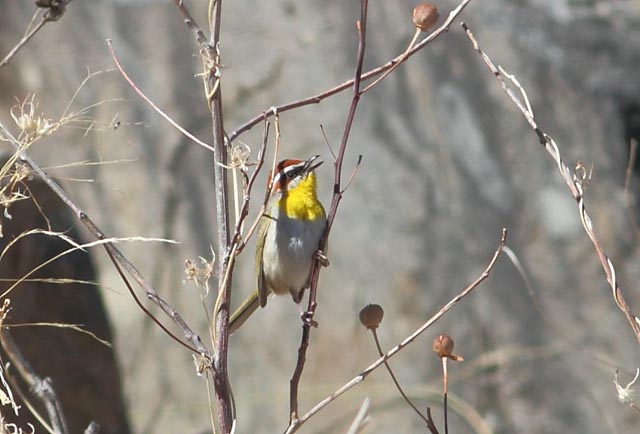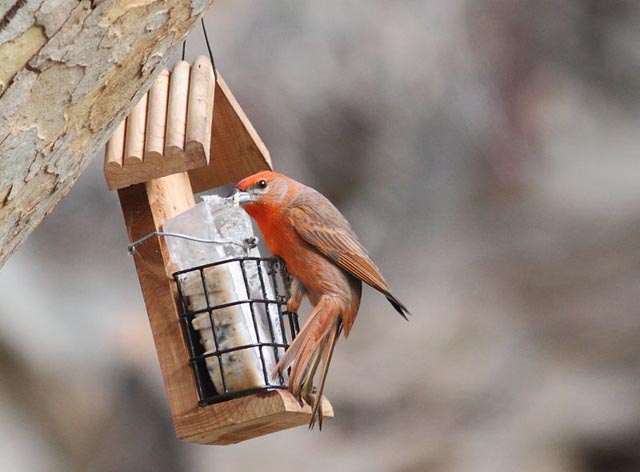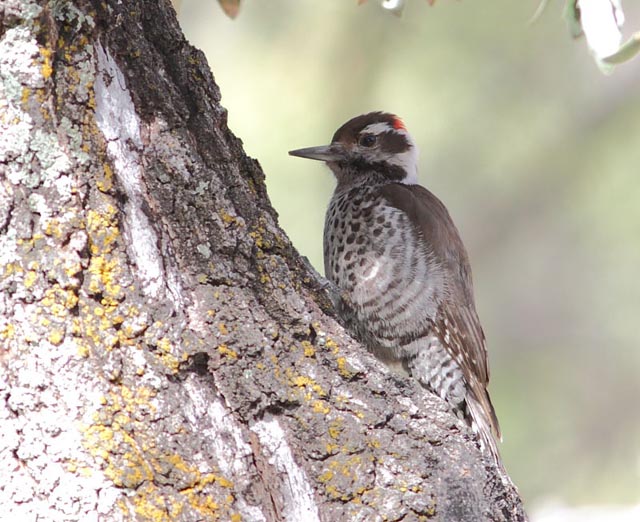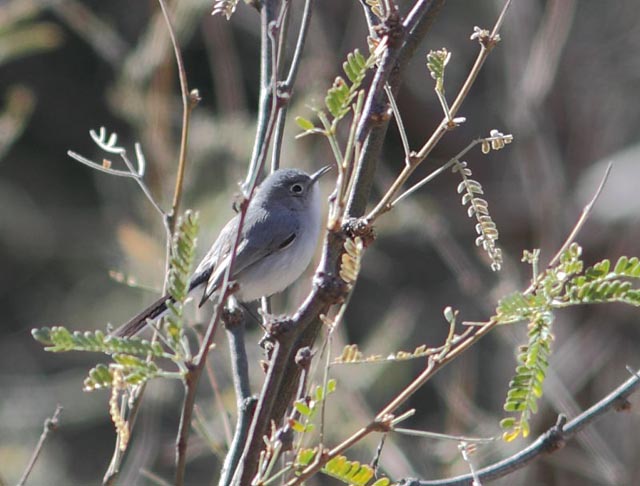From the Field
March 11: Susan Myers from her recently completed Cambodia tour
Our tour was a success again this year with marvelous encounters with all the star birds plus many others. We started with a day at Prek Toal, an amazing RAMSAR wetland site on the shores of the remarkable Tonle Sap Lake that teems with breeding waterbirds. The experience of being surrounded by hundreds and hundreds of birds is becoming increasingly rare in southeast Asia so it was a special day.

Waterbirds at Prek Toal with a Spot-billed Pelican center stage
We found our Greater Adjutants amongst the very many Lesser Adjutants, Painted Storks, Asian Openbills and many more but the hoped for Milky Stork eluded us...but not for long. The next day at Ang Trapeang Thmor, just west of Siem Reap, we found a single bird amongst a tree full of other storks and were able to admire this highly threatened species at length. The highlight of any trip to Cambodia has to be the search in the north for the Giant Ibis, a species thought to be extinct when it was rediscovered in the aftermath of Cambodia’s devastating civil war. This year we were incredibly lucky to find a pair perched quite close to the road before we even arrived at our lodge - the species is now doing quite well with the help of conservationists and birders alike - and that freed us up to spend time on searching for other special birds here such as White-shouldered Ibis, White-rumped Falcon, Collared Falconet, Black-headed Woodpecker (arguably the most beautiful of the family!), Neglected Nuthatch and too many more to mention.

White-rumped Falcon
Returning to Siem Reap we spent a full day at Angkor, one of Asia’s cultural wonders and not to be missed even on a birding tour!
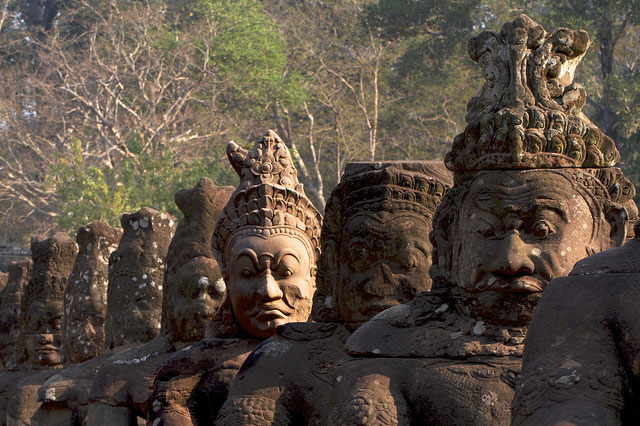
A scene at Angkor
Then it was eastward in search of the highly threatened and handsome Bengal Florican and the mysterious Manchurian Reed Warbler. This year we enjoyed sighting of up to a dozen floricans flying, dancing and hiding from us in the long grass. The reed warblers similarly turned on a great show, as did Red Avadavat, Bluethroat, and Yellow-breasted Bunting. At Kratie we found our Mekong Wagtails, after they initially put up a bit of resistance, and had some of our best ever views of the magical Irriwaddy Dolphins. Our last destination was in the far north east in the forests of Seima and Dak Dam. Pale-headed Pigeons showed very well for all and in the lowlands, we found a gorgeous Bar-bellied Pitta,
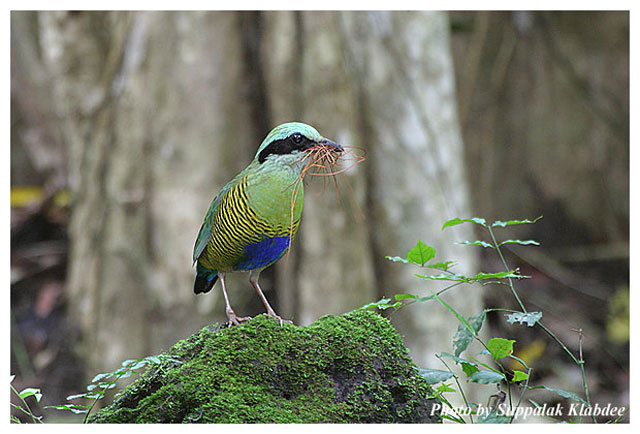
Bar-bellied Pitta
a last minute male Green Peafowl, as well as wonderful Great Hornbills, Gold-crowned Mynas, Orange-breasted Trogon and….the list goes on!
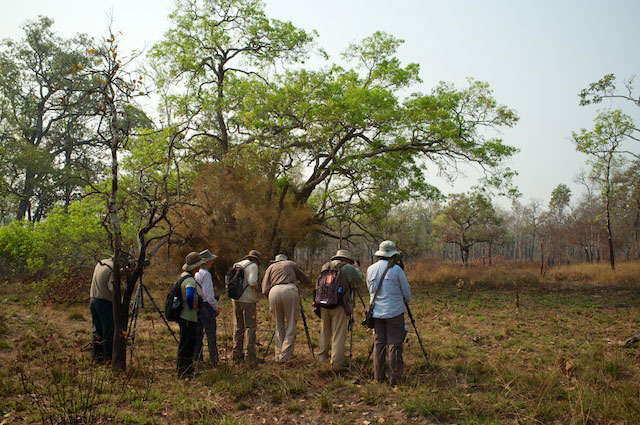
Birding the Cambodian countryside
March 3: Jon Feenstra on his just concluded Ecuador: A Week in Paradise tour
We just wrapped up a great week of birding in Northwest Ecuador. From our base at the comforatble Septimo Paraiso (near Mindo) we visited a variety of habitats ranging from the treeline elfin forest on the slope of Pichincha volcano all the way down to the hot lowlands at Rio Silanche - and everything in between. We saw some of the real specialties of the region: Club-winged Manakins playing their chords while displaying at a lek, a Moss-backed Tanager eating berries on a branch nearly within arm's reach, a family group of Tanager Finch foraging quietly along the roadside, and more than 35 species of hummingbird.
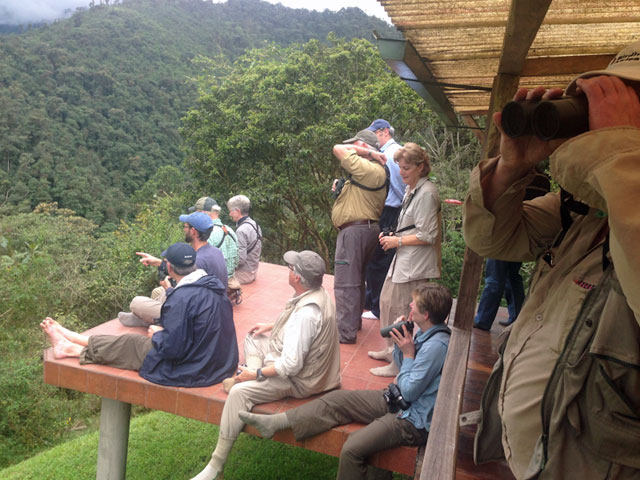
Watching hummingbirds at Pacha Quindi
We were also treated to crowd pleasers such as this female Powerful Woodpecker, and to charmers such this Cinnamon Flycatcher, giving proof that the cloud forest flycatchers aren't all just quick-moving little gray things.
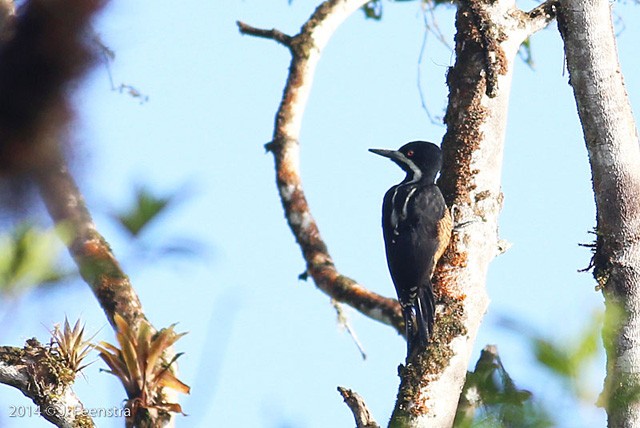
Powerful Woodpecker
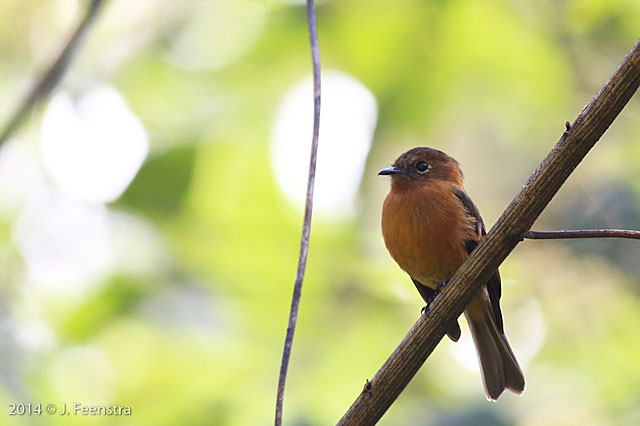
Cinnamon Flycatcher
Another consistent highlight of the Northwest is a visit to Angel Paz's farm. He has the secret for luring the shy antpittas out of the forest. Here is one of his new additions, the very pretty Chestnut-crowned Antpitta.
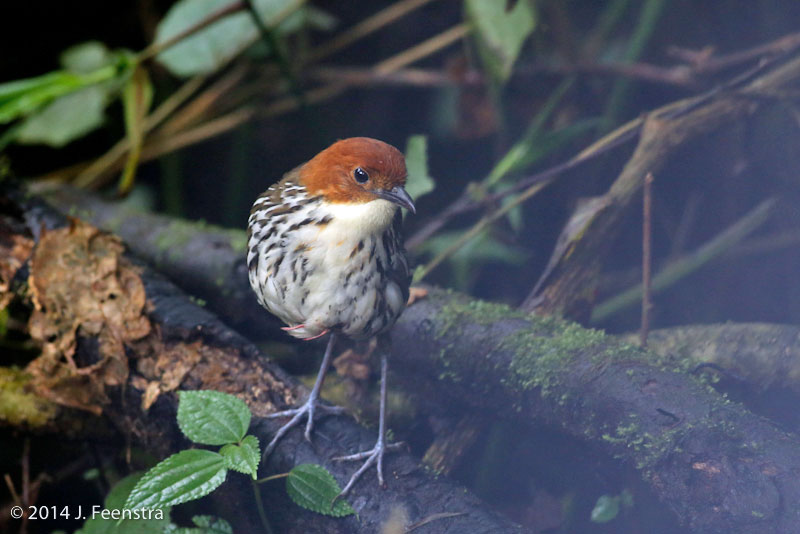
February 26: Jon Feenstra on the conclusion of his tour to La Selva Lodge, Ecuador
Reporting in from the airport after a great week in the Ecuadorian Amazon where we combined superb birding with the near luxurious appointments of La Selva Lodge.
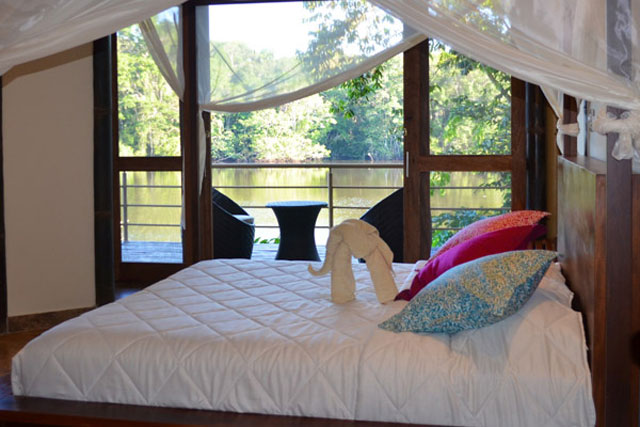
A room at La Selva Lodge
Most of our field time was either from La Selva's 150 foot canopy tower or one of their trails from the lodge, or by canoe as we were paddled around Garzacocha ("heron lagoon" in the indigenous Kichwa language)...and a heron was one of our singular highlights. It took a few tries but we were able to track down and get great looks at the small, cryptic Zigzag Heron.
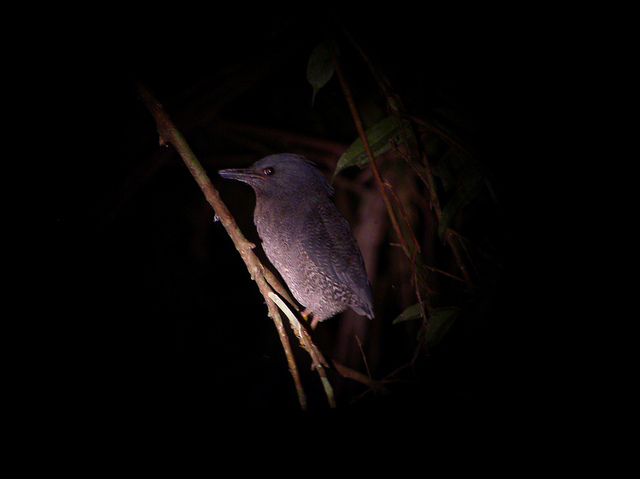
Zigzag Heron - image Gary Rosenberg
It wasn't all herons, though. We went to two parrot licks - the big parrot lick for big parrots like Mealy, Yellow-crowned and Blue-headed Parrots, and the small parrot lick that hosted hundreds of squabbling Cobalt-winged Parakeets, plus a few each of Scarlet-shouldered Parrotlets, Orange-cheeked Parrots, while some very big parrots, Scarlet Macaws, screeched in the trees overhead.
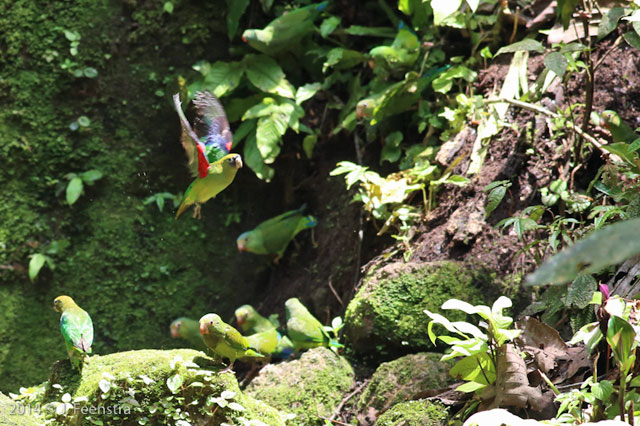
Cobalt-winged and Scarlet-shouldered Parakeets
That's leaving out a vast amount, of course, as there were also antbirds, flycatchers, manakins, woodpeckers, raptors, and cotingas, but I just don't have the time right now to write about them!
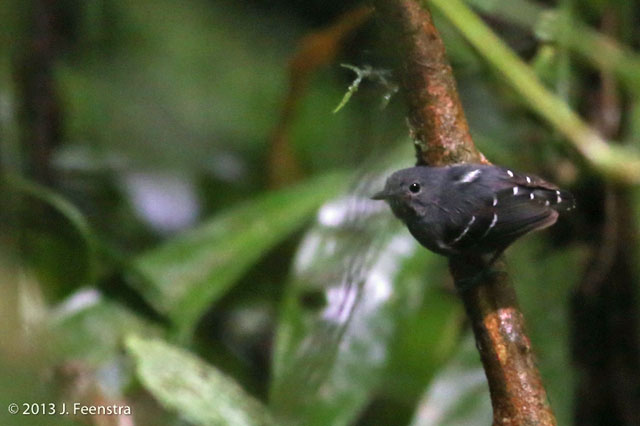
Plain-throated Antwren
February 24: Steve Howell from his recently completed Lacandon tour to southern Mexico
As well as spectacular rain forest, omnipresent Black Howler Monkeys, and mystical Maya ruins, the quintessential avian sights of this region never pale – from a translucent, ethereal White Hawk against cloudless blue skies to rainbow-colored Keel-billed Toucans (both below). Our early start along the Usumacinta River to Yaxchilán allowed for relaxed birding in the ruins (below), as well as close-up views of at least 10 (!) King Vultures feeding on a riverside carcass (with Black Vultures, below). We ended the trip with dizzying numbers of waterbirds in the Centla wetlands, including a nesting colony of Boat-billed Herons and a surprise American Bittern (both below), as well as good numbers of the more expected Pinnated Bittern, swarms of wintering North American warblers (including Blue-winged, Worm-eating, and Prothonotary), and a nice flock of Yucatan Jays, here at the edge of their range. Another great trip to “Mexico’s Amazon” – the Lacandon region of Chiapas.
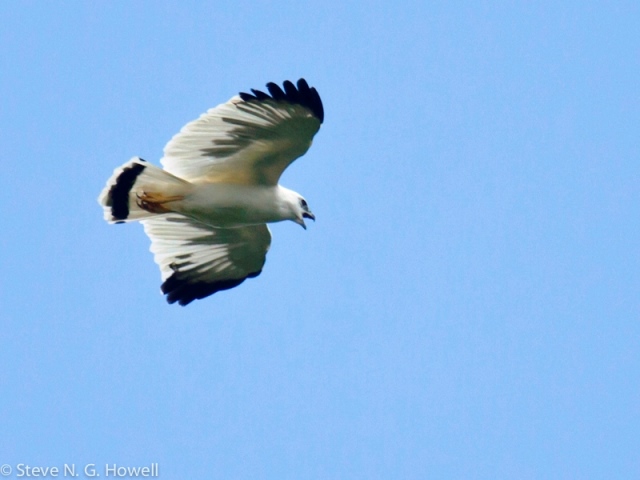
White Hawk
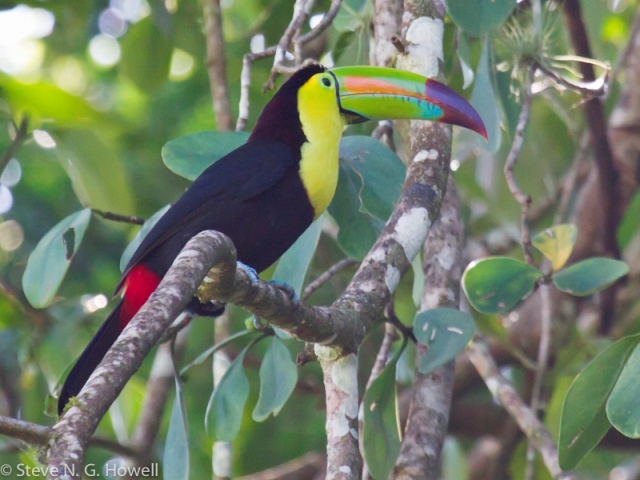
Keel-billed Toucan
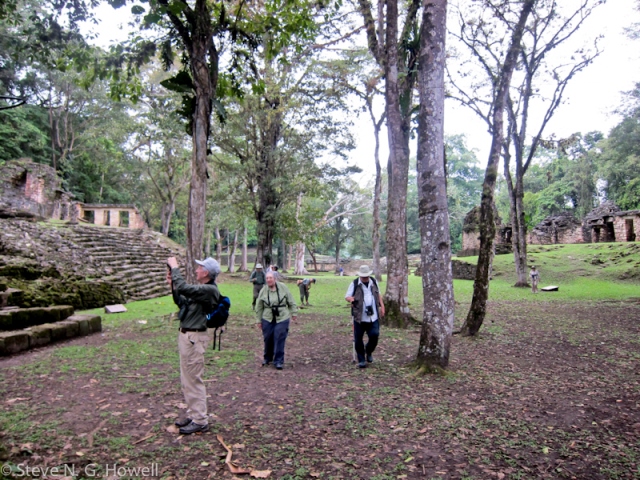
Yaxchilán ruins
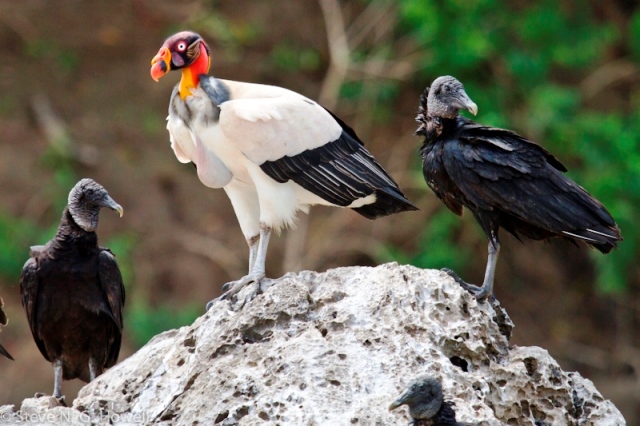
King Vultures with Black Vultures
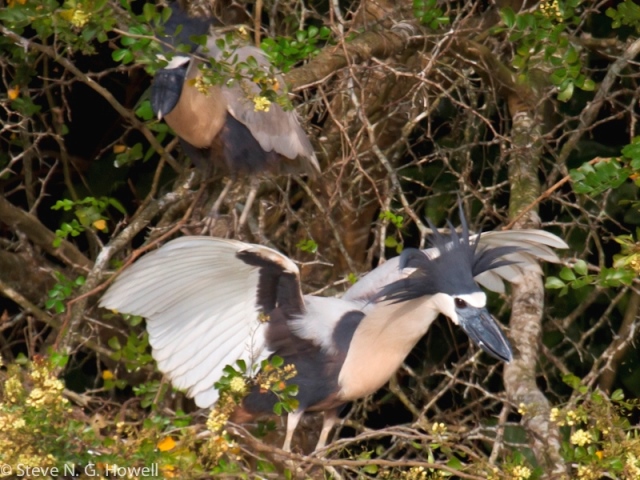
Boat-billed Herons
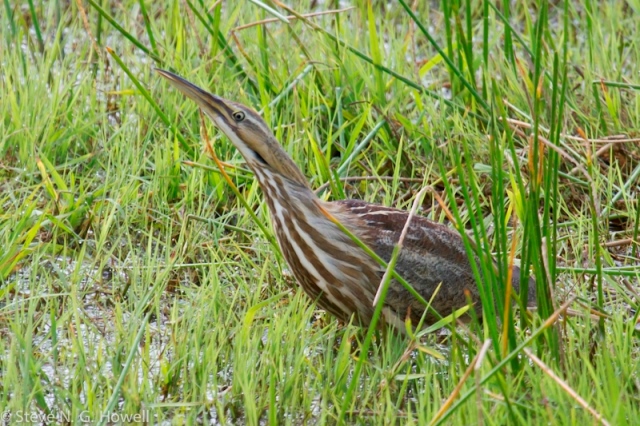
American Bittern
February 19: Rich Hoyer on his just-completed tour to Northern Peru
Our nine days of birding in northern Peru’s Mayo River watershed would have been wonderful even if measured only by our sightings of Marvelous Spatuletail and Long-whiskered Owlet. It took us four attempts to see the latter but the experience was worth it - a magical evening listening to the bird which ended up perched on an open branch just a few feet away. We saw many other superb birds and creatures along the way and took advantage of two new hummingbird feeding stations – the tour total of 41 species of hummers was remarkable. Other top birds were Andean Cock-of-the-rock, Grass-green, Vermilion, and White-capped Tanagers, Chestnut-crested Cotinga, Olivaceous Piha, and Ochre-fronted Antpitta.
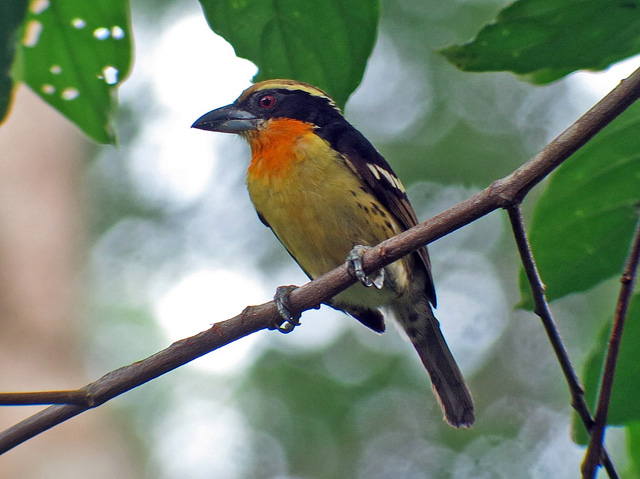
A male Gilded Barbet may not be quite as pretty as the female, but she had disappeared into the nest cavity nearby.

We had an amazing experience watching this Spotted Rail creep out of the rice fields and snatch morsels from the exposed mud.

A Brown-throated Sloth sleeping below the overlook where we watched Comb Ducks was a fun surprise.

The moths coming to night lights were a delight. This silk moth in the genus Titaea was one of the most spectacular.
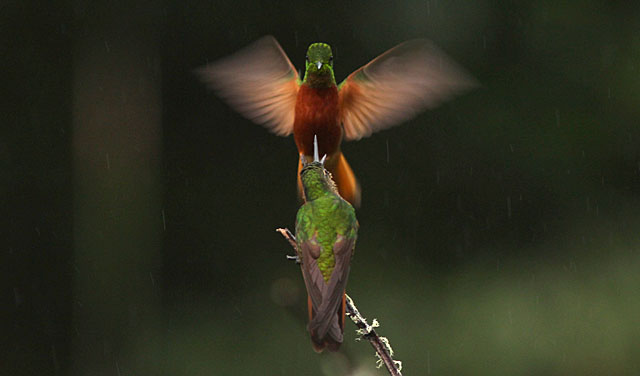
Two Chestnut-breasted Coronets vie for the best perch for defending the feeders at the Owlet Lodge.
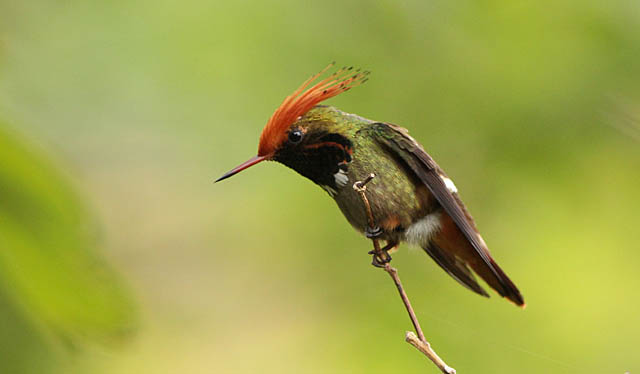
The star at the Waqanki garden was the incomparable Rufous-crested Coquette, one of 19 species of hummingbirds at the feeders.
February 18: Steve Howell from the ongoing Lacandon tour in southern Mexico
Scarlet Macaws burning bright in the early morning sun (below, feeding on palm fruits); a Sungrebe skulking along bamboo-forested river bank to great views of the enigmatic Blue Seedeater (below) and a crowd-pleasing Black-and-white Owl right over the cabins. Crested Guans overhead (!) (below) and an incredible Great Potoo also garnered votes for birds of the day. ...and it’s only Day 2 of this wonderful tour to the “Mexican Amazon.”
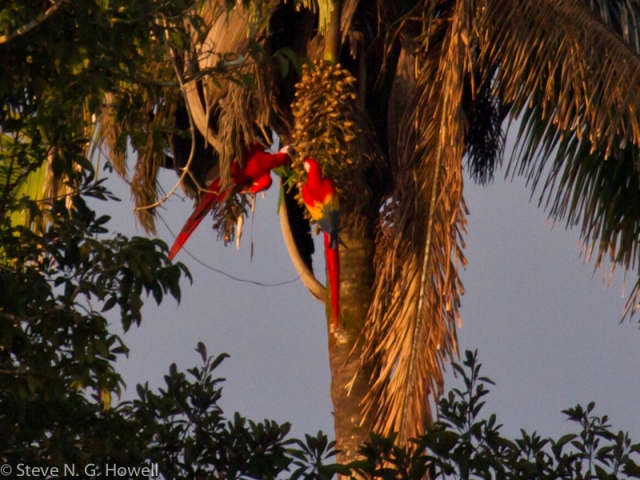
Scarlet Macaws
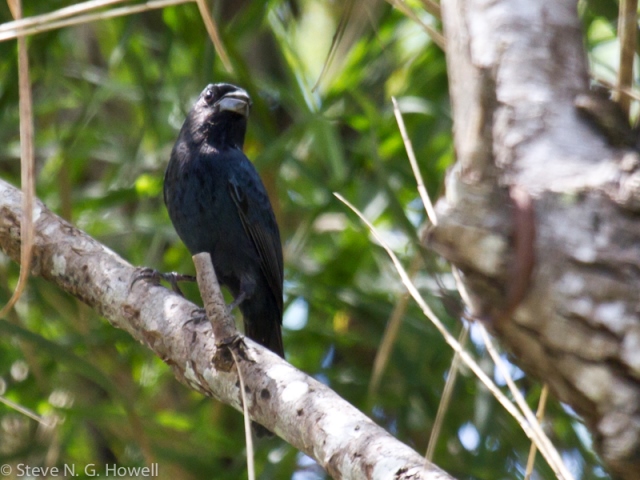
Blue Seedeater
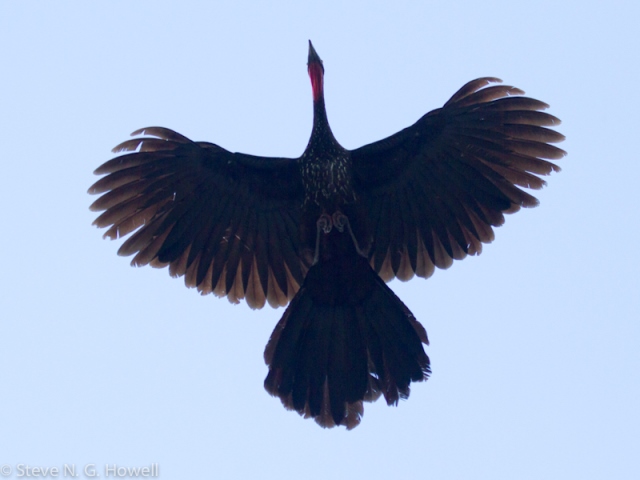
Crested Guan
February 14: Susan Myers from her recently completed winter tour of Japan
Birding in winter in Japan is a bit like a party! Great scenery, great food and great birds! One doesn't do it for the numbers – it’s all about the spectacles. We started this year with the incredible gathering of the cranes in Kyushu. It is such a memorable experience to see so many of these elegant birds gathered to feed and interact. This year we saw four species: the Hooded and White-naped Cranes in the thousands with a tiny scattering of Sandhill and Common Cranes.
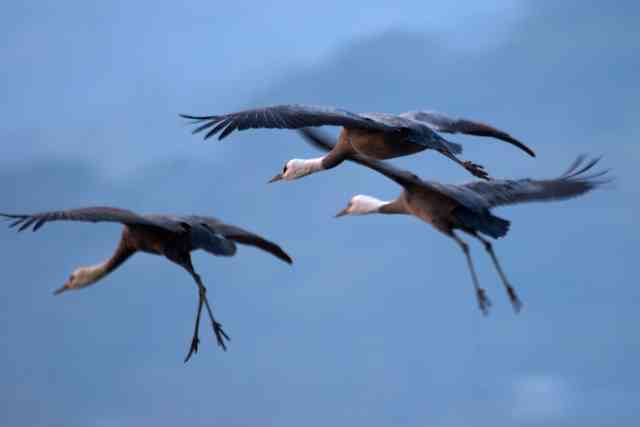
Hooded Cranes
Watching thousands of cranes flying across a rising sun at dawn? It doesn’t get much better. Of course, during winter everywhere we go the wildfowl are quite astounding. Best of all were gorgeous Smew, improbable Mandarin Ducks and enigmatic Baikal Teals. Not to be outdone were stunning Falcated Teals from the exotically named Satsuma Bridge, the ever-popular Harlequin Ducks on the ice bound Shiretoko Peninsula and the charismatic Long-tailed Ducks at Nosappu. In balmy weather we had close looks at tiny twittering Japanese Murrelets from our comfortable boat against a backdrop of palm trees and snow in Kyushu.
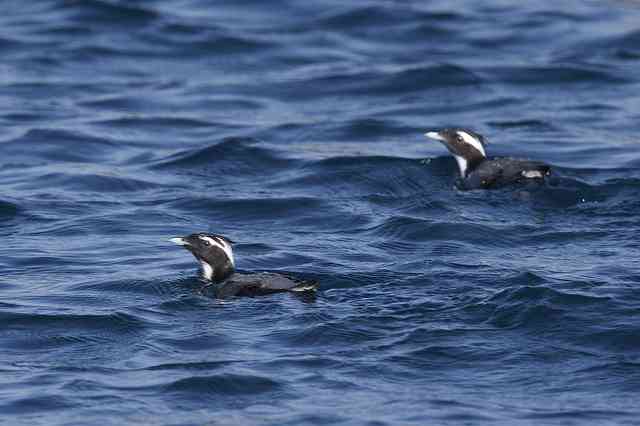
Japanese Murrelets
The next spectacle was the Snow Monkeys and what a show! A walk through beautiful winter forests takes us to their abode amongst the steaming hot springs, and there they are: lording adult males, females with their babies, and naughty adolescents all enjoying their hot baths.
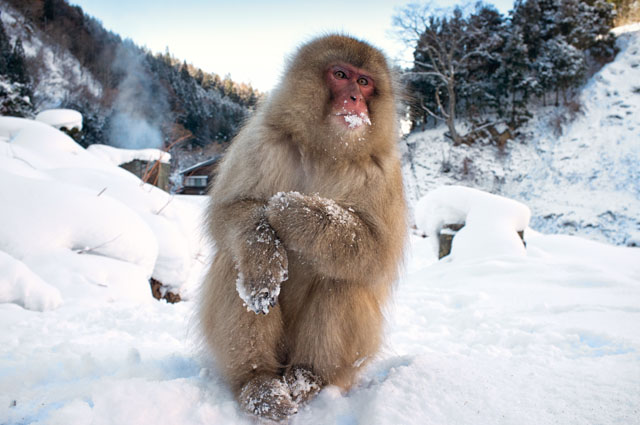
Snow Monkey
Heading up to Hokkaido our next spectacle was the winter gathering of Steller’s Sea Eagles. These birds are truly breathtaking! Huge, majestic and beautiful against the snowy white winter Hokkaido backdrop.

Steller's Sea Eagle
Last up and arguably, most highly anticipated were those most beautiful of the cranes, the Red-crowned Crane.
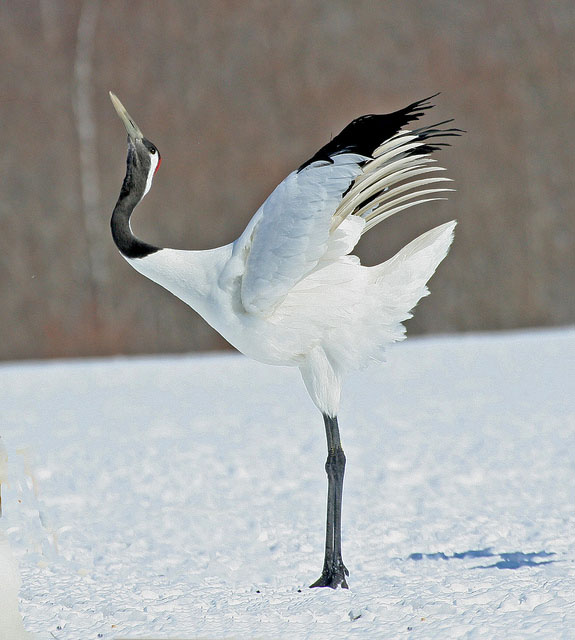
Red-crowned Crane
We watched as they danced and strutted and bugled in warm winter weather – a perfect end to a very memorable tour.
February 13: Paul Holt from his on-going tour of Northern India
A pair of Painted Spurfowl on our first Ranthambhore game drive and great looks at a Tiger on our third (our tenth years in a row that we've seen this magnificent beast). As ever luck plays a huge role...
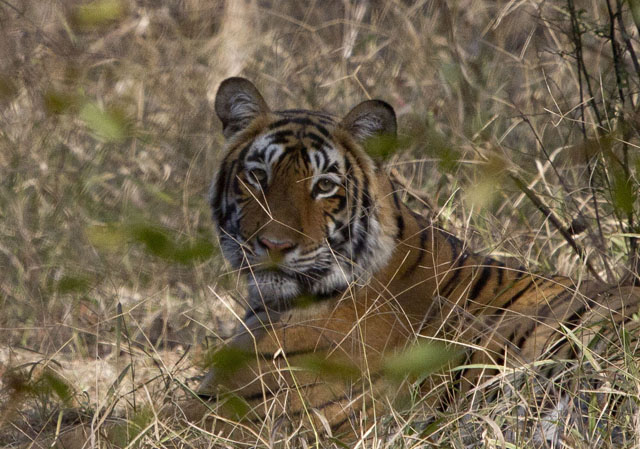
February 5: Jake Mohlmann from his ongoing tour to Southeastern Arizona
Our first few days were stuffed with rare and exciting birds. One of best was a very approachable pair of Rufous-capped Warblers at one of their few known locations in the U.S., while a pair of Golden Eagles soared overhead and Black-chinned Sparrows bathed nearby. The group's photographers were glued to their viewfinders.
Rufous-capped Warbler
In world-famous Madera Canyon a showy male Elegant Trogon perched high above an equally garish male Hepatic Tanager that was visiting a suet feeder while a pair of Arizona Woodpeckers fought for space on a particularly productive branch and took turns flaking off bark to search for morsels.
<pHepatic Tanager
<pArizona Woodpecker
At Patagonia Lake another rare breeder, Black-capped Gnatcatcher, all but posed for pictures while serenading the group with its cat-like mewing calls.
Black-capped Gnatcatcher
All this excitement in such splendid surroundings and still so much to come....
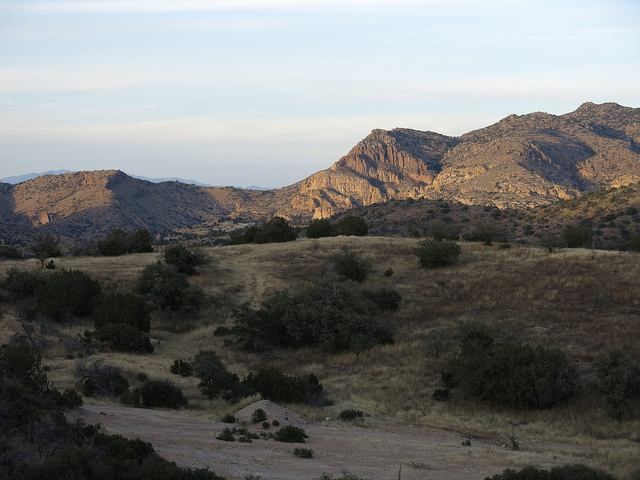
A Southeast Arizona winter view
January 29: Paul Holt from his on-going tour of Southern India
We got off to a rocky start as access to most of the sites around the hill station of Ooty was restricted as a man-eating Tiger was on the loose. Nevertheless we knew of alternative sites, and the vast majority of the region's specialities, including Grey Junglefowl, Black-chinned (or Nilgiri) Laughingthrush, Black-and-orange and Nilgiri Flycatchers and Nilgiri Pipit were soon 'in the bag'.
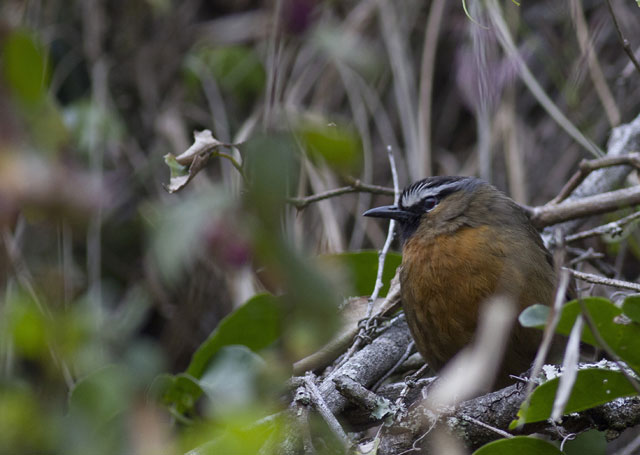
Black-chinned (or Nilgiri) Laughingthrush
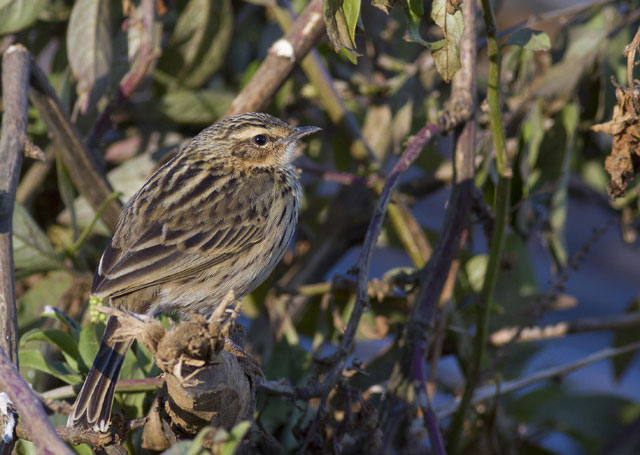
Nilgiri Pipit
Other goodies, not endemics but hardly second division fare, included close encounters with a juvenile Rufous-bellied Eagle and a host of mammals. Our second port of call, Mudumalai NP, was just as exciting and rewarding,as Ooty. Highlights here included a solitary White-bellied Minivet, numbers of Malabar Parakeets, Jungle and several elusive Painted Bush-quail.
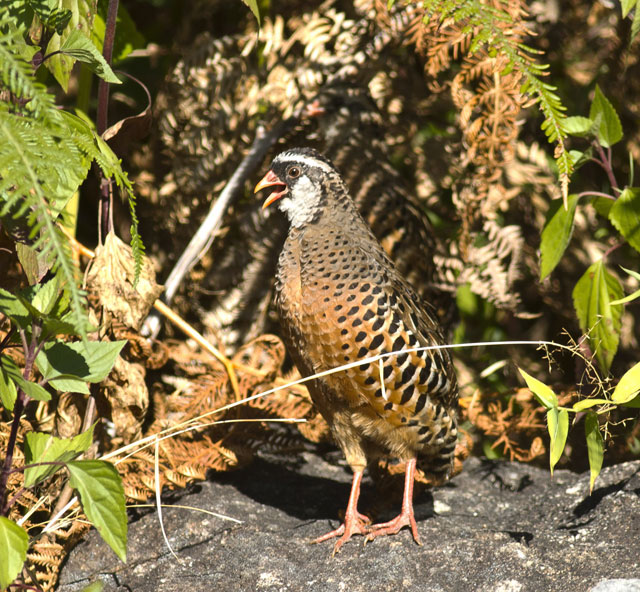
Painted Bush-quail
Our second hill station, Munnar, was similarly productive with astonishing looks at more Painted Bush-quail as well as Indian Broad-tailed Grassbird, umpteen White-bellied Blue Robins and more Kerala Laughingthrushes than you could shake a stick at. The spectacular scenery - Munnar's peaks host Nilgiri Thar, one of the world's rarest goats - the birding, mammal viewing, food and accommodation all exceeded our expectations -as they did at Periyar NP, just over the State border in Kerala.
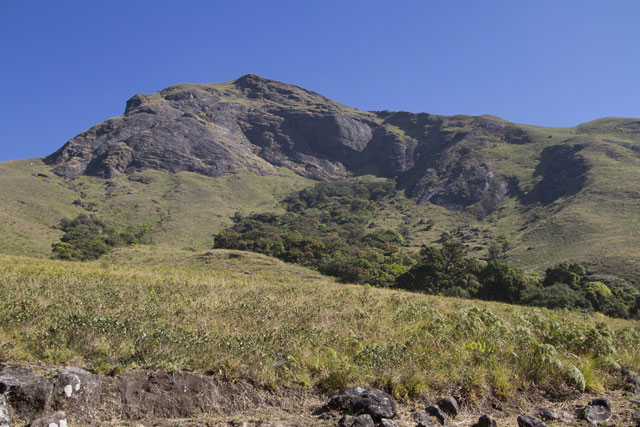
Rajamalai Sanctuary, Munnar

